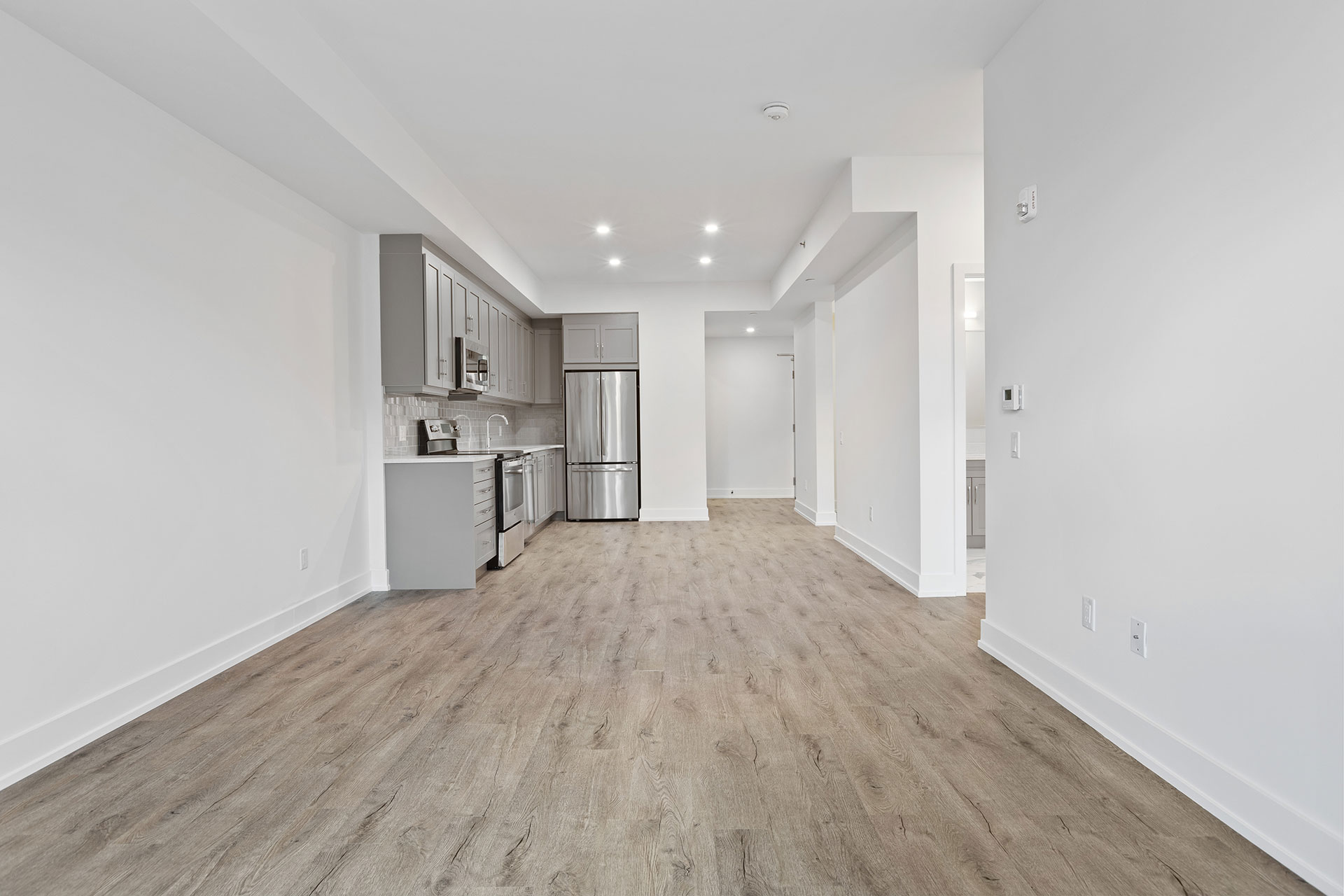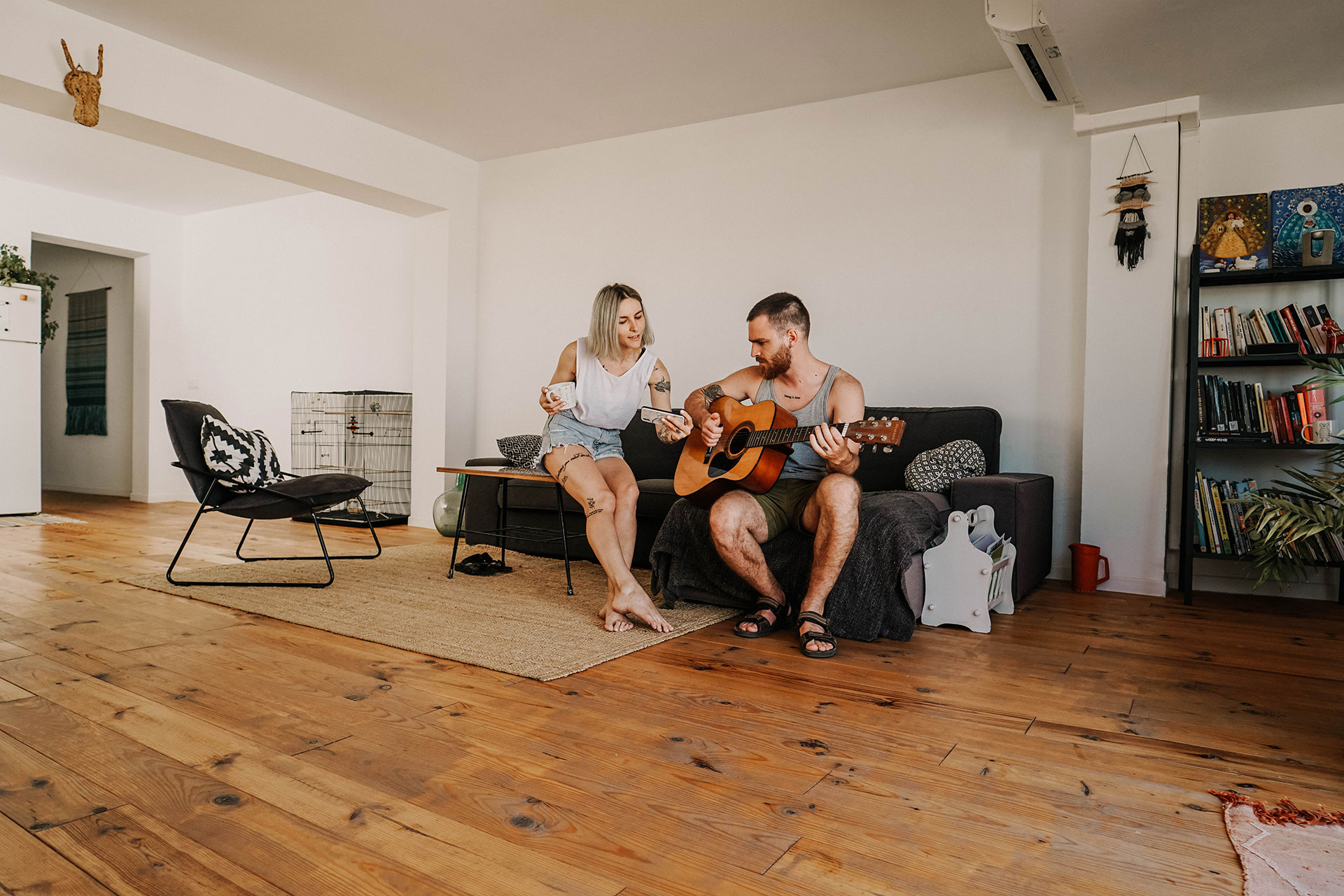Choosing the right flooring for your home is an important decision that can significantly impact the overall aesthetic appeal and functionality of your living space. With so many options available in the market, it can be overwhelming to determine which type of flooring will best suit your needs. This ultimate guide will provide you with the necessary insights and considerations to make an informed decision.
Understanding Your Needs and Lifestyle
Before delving into the different types of flooring, it’s crucial to assess your specific needs and lifestyle requirements. Understanding factors such as foot traffic, the presence of pets or children, and your style preferences will help narrow down the options.
Assessing Foot Traffic
Consider the amount of foot traffic in each area of your home. High-traffic areas like hallways and entryways require flooring that can withstand constant use and potential wear and tear. On the other hand, low-traffic areas such as bedrooms may allow for more delicate flooring options.
Considering Pets and Children
If you have pets or children, it’s important to choose flooring that can handle their activities. For example, hardwood flooring may be prone to scratches from pets’ nails, while carpet flooring may be challenging to clean in case of spills or accidents. Opting for more durable and easy-to-maintain flooring options might be a wise choice.
Identifying Style Preferences
The style and ambiance you want to create in your home play a crucial role in selecting the right flooring. Different flooring types have their own unique aesthetics, ranging from the warm and classic look of hardwood to the sleek and contemporary appearance of tile. Consider the overall theme and design of your home to ensure the flooring complements the existing decor.
Types of Flooring
- Hardwood FlooringHardwood flooring is a timeless and elegant option that adds warmth and character to any home. It is available in various wood species, each offering different colors and grain patterns. Hardwood is durable and can be refinished multiple times, making it a long-lasting investment.
- Laminate FlooringLaminate flooring offers the look of hardwood or other natural materials at a more affordable price point. It is composed of layers that mimic the appearance of wood or stone and is highly resistant to scratches and stains. Laminate flooring is a popular choice for those seeking a budget-friendly option without compromising on aesthetics.
- Vinyl FlooringVinyl flooring is known for its durability and versatility. It comes in a wide range of designs, including options that mimic the look of hardwood, tile, or stone. Vinyl flooring is moisture-resistant, making it suitable for areas prone to spills or high humidity, such as kitchens and bathrooms.
- Carpet FlooringCarpet flooring provides warmth, comfort, and noise reduction. It comes in a variety of colors, textures, and patterns, allowing you to customize the look of your space. Carpet is particularly popular in bedrooms and living rooms, where a cozy and inviting atmosphere is desired.
- Tile FlooringTile flooring is highly durable and suitable for areas exposed to moisture or heavy use, such as bathrooms and kitchens. It comes in various materials, including ceramic, porcelain, and natural stone. Tile offers a wide range of design possibilities, from classic to contemporary styles.
Durability and Maintenance
When choosing flooring, it’s essential to consider durability and maintenance requirements to ensure your investment lasts for years to come. Different flooring materials have varying levels of durability and maintenance needs.
Hardwood Flooring
Hardwood flooring is renowned for its durability and can withstand heavy foot traffic. However, it requires regular maintenance, such as refinishing and occasional resealing, to maintain its appearance and protect it from scratches and moisture.
Laminate Flooring
Laminate flooring is highly durable and resistant to scratches, stains, and fading. It is relatively low-maintenance and easy to clean, requiring regular sweeping or vacuuming and occasional mopping. However, laminate flooring is not as resistant to moisture as other options.
Vinyl Flooring
Vinyl flooring is known for its exceptional durability and resistance to moisture, stains, and scratches. It is effortless to maintain and requires regular sweeping or vacuuming and occasional mopping. Vinyl flooring is an excellent choice for areas prone to spills or high humidity.
Carpet Flooring
Carpet flooring provides comfort and warmth but requires regular maintenance to keep it looking its best. Vacuuming on a weekly basis and occasional professional cleaning are recommended to remove dirt, allergens, and stains. Carpet may be less durable in high-traffic areas compared to other flooring options.
Tile Flooring
Tile flooring is highly durable and resistant to scratches, stains, and moisture. It is easy to maintain, requiring regular sweeping or vacuuming and occasional mopping. Grout lines may require periodic sealing to prevent discoloration or staining.
Budget Considerations
When choosing the perfect flooring for your home, it’s important to consider your budget not only in terms of the initial cost but also long-term expenses.
Initial Cost
The cost of flooring materials varies significantly depending on the type and quality. Hardwood flooring is generally more expensive, while laminate, vinyl, and carpet offer more budget-friendly options.
Installation Costs
In addition to the cost of materials, consider the installation expenses. Hardwood flooring often requires professional installation, which can add to the overall cost. Laminate, vinyl, and carpet flooring may be more DIY-friendly, allowing for potential cost savings.
Long-term Maintenance
Factor in the long-term maintenance costs when making your decision. Hardwood flooring, for example, may require periodic refinishing, which incurs additional expenses. On the other hand, carpet flooring may require more frequent cleaning or replacement in high-traffic areas.
Environmental Impact
If you’re concerned about the environmental impact of your flooring choices, there are eco-friendly options to consider.
Sustainable Materials
Some flooring materials, such as bamboo and cork, are considered sustainable due to their rapid growth and renewable nature. These materials offer an eco-friendly alternative to traditional hardwood flooring.
Eco-Friendly Options
Additionally, certain manufacturers offer eco-friendly flooring options made from recycled materials or using low VOC (volatile organic compounds) adhesives. These options help reduce the environmental footprint associated with flooring.
Choosing the Right Flooring for Each Room
Different rooms in your home have different requirements, and choosing the right flooring for each space is essential.
Living Room
The living room is often a high-traffic area that requires durable flooring. Options such as hardwood, laminate, or carpet flooring can create a warm and inviting atmosphere.
Bedroom
In the bedroom, comfort and coziness are key. Carpet flooring provides a soft and comfortable surface, while hardwood or laminate flooring can add elegance to the space.
Kitchen
The kitchen is prone to spills and high humidity, making moisture-resistant flooring like tile or vinyl a suitable choice. These options are also easy to clean and maintain.
Bathroom
Moisture-resistant flooring is essential in bathrooms. Tile, vinyl, or even waterproof laminate flooring are popular choices due to their ability to withstand moisture and frequent cleaning.
Hiring a Professional
While some flooring installations can be DIY projects, hiring a professional can ensure a seamless and high-quality outcome.
Finding a Reliable Contractor
When hiring a professional contractor, do thorough research, read reviews, and ask for recommendations from friends or family. Look for contractors with experience in the specific type of flooring you’ve chosen.
Requesting Quotes
Get quotes from multiple contractors to compare costs and services. Ensure that the quotes include all necessary materials, labor, and any additional fees.
Checking References
Before finalizing your decision, ask the contractor for references from previous clients. Reach out to those references to inquire about their experience and the quality of work provided.
Finalizing Your Decision
To make the final decision, weigh the pros and cons of each flooring option based on your needs, lifestyle, budget, and style preferences.
Comparing Options
Review the advantages and disadvantages of each flooring type, considering factors such as durability, maintenance, and aesthetics. Take into account the specific requirements of each room in your home.
Weighing Pros and Cons
Consider the cost, durability, maintenance, and environmental impact of each flooring option. Determine which factors are most important to you and prioritize accordingly.
Conclusion
Choosing the perfect flooring for your home requires careful consideration of your needs, lifestyle, and budget. By assessing factors such as foot traffic, the presence of pets or children, and style preferences, you can narrow down the options. Understanding the durability and maintenance requirements, as well as the environmental impact, further aids in making an informed decision. Finally, hiring a professional and comparing the pros and cons of each option will help you finalize your choice and ensure a flooring solution that enhances the beauty and functionality of your home.
FAQs
- Can hardwood floors be installed in bathrooms?Hardwood flooring is not recommended for bathrooms due to its susceptibility to moisture. Instead, opt for moisture-resistant options like tile or vinyl.
- Is carpet a good option for households with pets?Carpet can be challenging to maintain in households with pets due to potential stains and pet hair. Consider more pet-friendly options like laminate or vinyl flooring.
- How long does laminate flooring typically last?The lifespan of laminate flooring depends on factors such as quality, maintenance, and foot traffic. On average, laminate flooring can last 15-25 years with proper care.
- What is the best flooring for high-traffic areas?For high-traffic areas, durable options like hardwood, laminate, or tile flooring are recommended. These materials can withstand heavy use and are more resistant to wear and tear.
- Are there any eco-friendly alternatives to traditional flooring materials?Yes, sustainable materials like bamboo and cork offer eco-friendly alternatives to traditional hardwood flooring. Additionally, some manufacturers offer flooring options made from recycled materials or low VOC adhesives.
- If you’re in/near the following areas and need flooring, Click Here For a FREE Estimate!
We’re looking forward to hearing from you!

